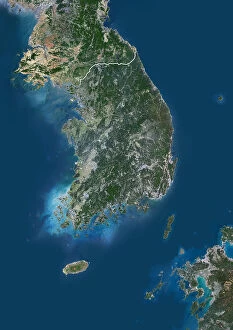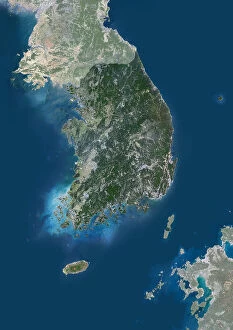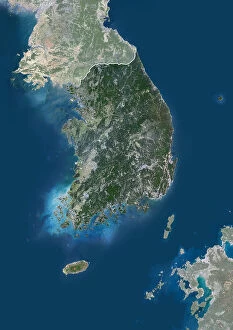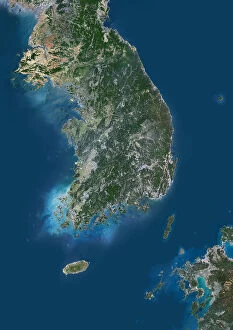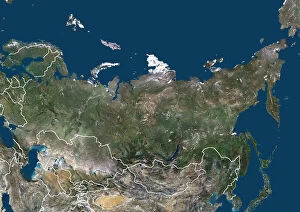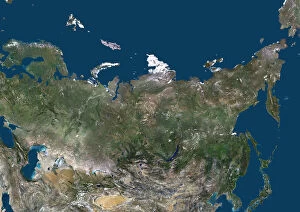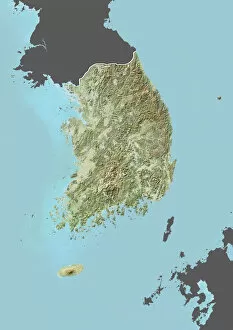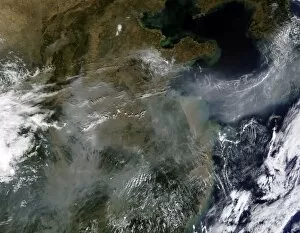Korean Peninsula Collection
The Korean Peninsula, as seen in this captivating satellite image acquired by NASA on August 10, 2010, showcases a mesmerizing blend of natural and man-made phenomena
For sale as Licensed Images
Choose your image, Select your licence and Download the media
The Korean Peninsula, as seen in this captivating satellite image acquired by NASA on August 10, 2010, showcases a mesmerizing blend of natural and man-made phenomena. From the stunning view of Korea at night, illuminated by countless city lights twinkling like stars, to the aftermath of Tropical Storm Dianmu that swept over the East China Sea earlier that month. As we gaze upon this image, our eyes are drawn to the hazy atmosphere enveloping the North China Plain. A reminder of how weather systems can transcend borders and impact neighboring regions. The presence of snow in Korea serves as a testament to its diverse climate and geographical features. Nature's fury is also evident in this snapshot; we witness Tropical Storm Muifa making its way across China and Korea while another storm named Kompasu lurks nearby. These swirling tempests remind us of the unpredictable power nature possesses. In contrast to these tumultuous events, Typhoon Sanba looms over the vast Pacific Ocean and parts of the Philippines. Its immense size highlights both its destructive potential and Mother Nature's awe-inspiring grandeur. This comprehensive satellite view provides us with an opportunity to marvel at our planet's intricate tapestry. It allows us to appreciate not only human civilization but also forces beyond our control that shape landscapes and lives alike. Finally, we observe South Korea's east coast covered in a blanket of pristine white snowfall—a serene sight amidst all these dynamic elements captured from above. The Korean Peninsula stands as a microcosm where humanity coexists with nature's mightiest displays—where bustling cities thrive under starlit skies while storms rage overhead or leave their mark behind. This image encapsulates both beauty and chaos on one small stretch of land—an enduring symbol of resilience for those who call it home.

